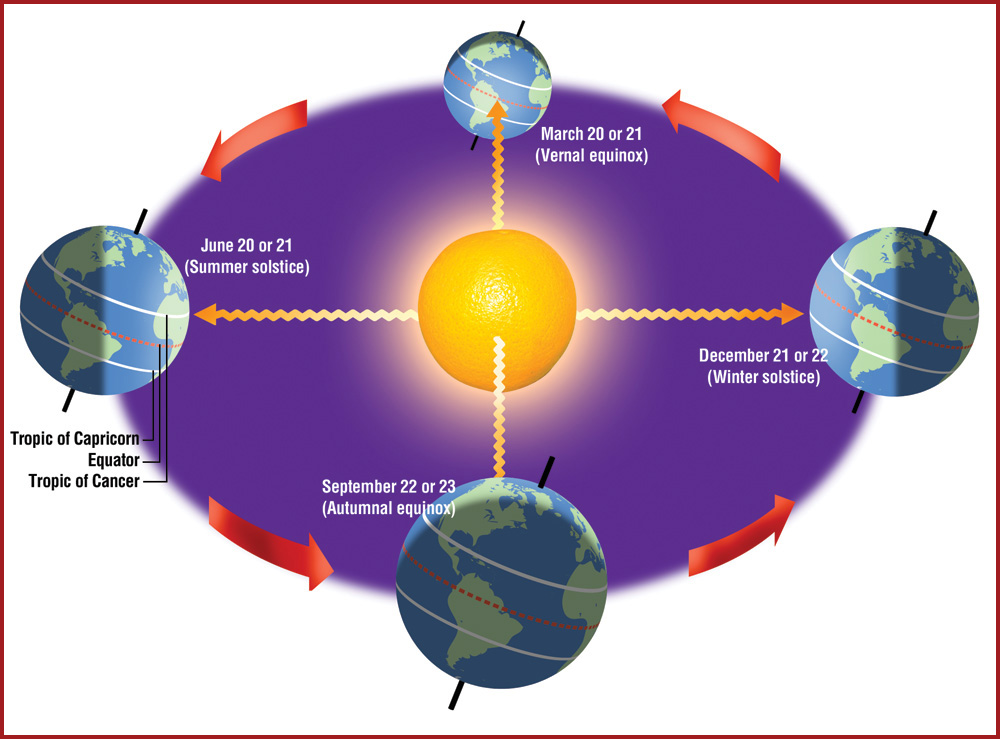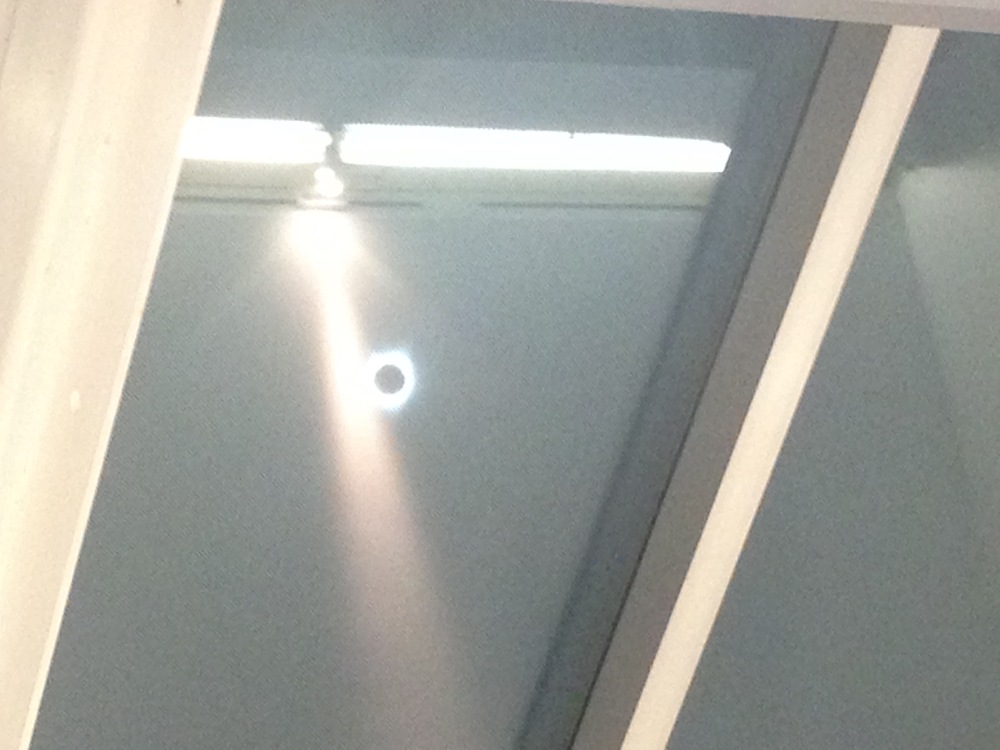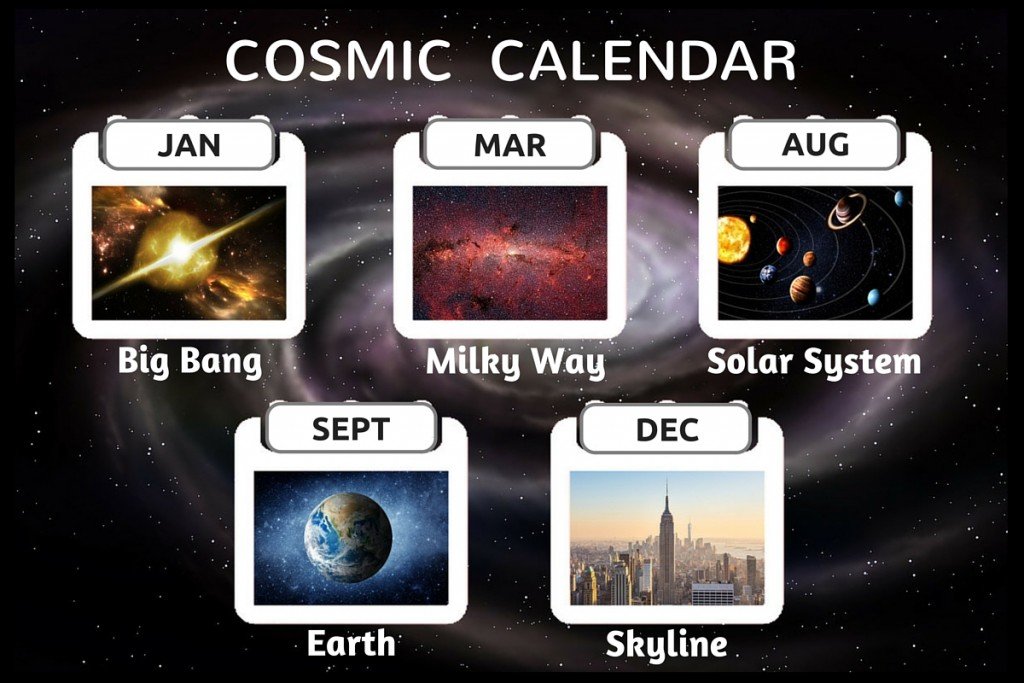
Down on Earth, it’s easy to think the passage of 100 years is a long time. After all, it’s certainly longer than a human’s life expectancy. However, after hearing that modern humans can only be accounted for in 2 minutes of history, it’s hard to believe that the time spanning from the origins of modern humans until today has occupied a significant amount of time. Now you may wonder why I said that modern humans in history only lasts for 2 minutes when modern humans evolved around 40,000 years ago. Let me explain. If the universe’s history, starting with its inception 14 billion years ago, was put into a calendar of one year, modern human history would only account for two minutes of the time. That means that if you placed all 14 billion years of the universe’s history into a calendar year, modern humans would occupy the calendar at 11:58 on December 31. This calendar, known as the cosmic calendar, begins on January 1st, when the Big Bang occurs. According to this calendar, the Milky Way was formed sometime in February. What is even more fascinating about this cosmic calendar is that when calculated to the scale of a year, dinosaurs roamed the Earth only five days prior to modern humans, on December 26. This is a stark contrast to our record of time, where dinosaurs populated the planet around 225 million years ago. Probably the most important idea that this calendar puts into perspective is the fact that our solar system, despite the fact that it is 4.6 billion years old, has only been a part of the universe for a third of the universe’s existence. That means that according to the cosmic calendar, our solar system only formed on September 3. When put into perspective, it’s hard to believe that any passage of time is truly significant over the span of 14 billion years and when this is compounded with the vast size of the universe, it’s hard to believe that our lives are not anything more than a blip in space and time.

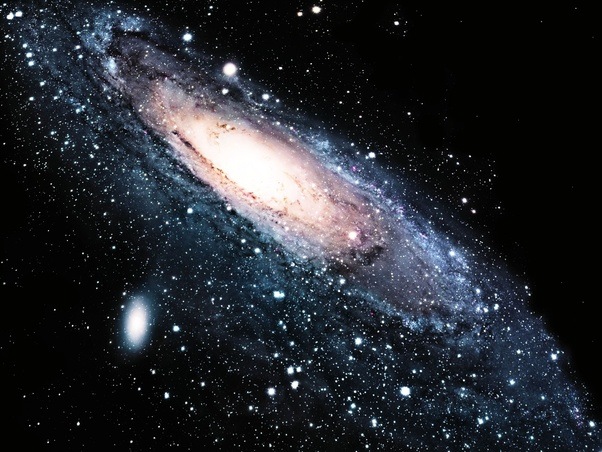
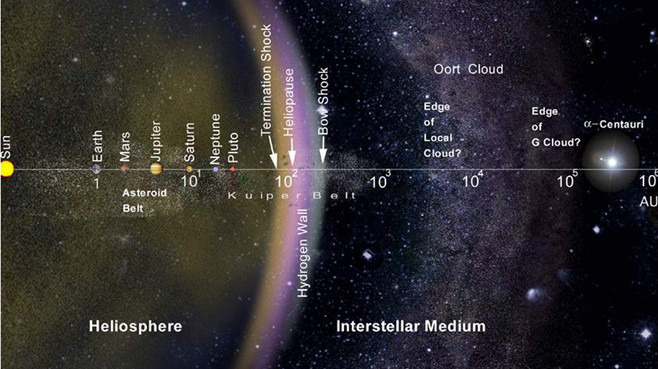
 Well, surely earth shows up somewhere in the middle of the year right? Well, no. Our galaxy, the Milky Way, was only formed by around March in this visualization, with the disk part (which contains all the stars, dust, and such) forming around May. The earth formed along with the rest of the solar system around 3 months later in the Orion Spur. So, from New Years to now (first galaxy formation) on the cosmic calendar was around 0.95 billion years. By the time the semester is over and we’ve taken the final for astro, the Milky Way will be a few days short of fully forming its disk component, and the Earth will only have formed a few weeks after classes start for the next academic year!
Well, surely earth shows up somewhere in the middle of the year right? Well, no. Our galaxy, the Milky Way, was only formed by around March in this visualization, with the disk part (which contains all the stars, dust, and such) forming around May. The earth formed along with the rest of the solar system around 3 months later in the Orion Spur. So, from New Years to now (first galaxy formation) on the cosmic calendar was around 0.95 billion years. By the time the semester is over and we’ve taken the final for astro, the Milky Way will be a few days short of fully forming its disk component, and the Earth will only have formed a few weeks after classes start for the next academic year!